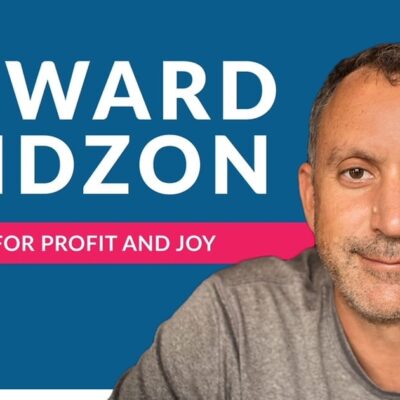
The Week in Charts (10/30/23)
View the video of this post on YouTube here.
__
This week’s post is sponsored by YCharts. Mention Charlie Bilello to receive a free trial and 20% off your subscription when you initially sign up for the service. View my recent webinar with YCharts here: 10 Charts Every Investor Should Know.

__
The most important charts and themes in markets and investing…
1) The Biggest Correction of the Year
The S&P 500 is now down over 10% from its high in late July, the biggest correction of the year.

Is such a decline unusual?
Not at all…
- A 10% intra-year drawdown has happened every 1.6 years on average.

- Since 1928, the average year has seen a 16% intra-year decline.

2) Largest Stocks Continue to Mask Broader Weakness
It’s been a great year for the 50 largest stocks in the S&P 500, which are still up 20% year-to-date even after the recent correction. But the performance of the average stock paints a very different picture with the S&P 500 equal weight down 4% YTD and small caps down 6%.

Given this broader weakness, it’s not at all surprising to see sentiment turning south, with the percentage of bears in the AAII poll moving up to 43% (highest since May). Like clockwork: the more prices fall, the more bearish investors become.

3) The Earnings Comeback Continues
While the stock market has been moving lower of late, earnings continue to recover from last year’s downturn.
With 44% of companies reported, S&P 500 Q3 GAAP earnings per share are 18% higher than a year ago, the 3rd straight quarter of positive YoY growth and highest growth rate since Q4 2021.

S&P quarterly earnings are now just 2% below the record high in Q4 of 2021.

Big tech has been leading the charge higher, with increasing margins and better-than-expected numbers across the board:
- Microsoft’s revenues increased 13% over the last year to a new quarterly high of $56.5 billion. Net income grew 27% YoY to a record $22.3 billion. Operating profit margins moved up to 47.6% from 42.9% a year ago.

- Google’s revenues increased 11% over the last year to a new quarterly high of $76.69 billion. Net income increased 42% YoY to $19.69 billion. Operating profit margins moved up to 28% from 25% a year ago.

- Meta’s Q3 revenues increased 23% over the prior year to a new quarterly high of $34.2 billion. This was their highest revenue growth since Q3 2021. Net income increased 164% YoY to a record $11.6 billion and operating margins increased from 20% to 40%.

4) The Summer Spending Spree
It’s official: the US economic expansion continues and is now 41 months in duration.

3rd Quarter Real GDP jumped up to 4.9%, the highest growth rate since Q4 2021.

While not expected to continue (Q4 GDP consensus estimate is 0.9%), the consumer spending spree was responsible for more than half of the growth in Q3 (2.7% out of 4.9%). Inventory growth and government spending were big contributors as well.

5) Buying vs. Renting
The cost to buy a home is now 52% higher than the cost to rent, a record premium (it peaked at 33% during the last housing bubble in 2006).

While rents have increased substantially over the last few years, home prices have increased much more. And with mortgage rates at their highest levels since November 2000, this is only compounding the problem for new homebuyers.

US housing affordability is actually worse today than the peak of the last housing bubble. The median American household would need to spend 44.6% of their income to afford the median priced home, a record high.

Given this backdrop, it’s not surprising to see an uptick in cancellations. 53k US home purchases were canceled in September, which equates to 16.3% of all homes under contract. That’s the highest cancellation percentage since October 2022.

What’s the easiest solution to the affordability crisis we’re in?
Lower prices. While existing homeowners have been reluctant to cut their asking prices, we’re seeing the opposite in the new home market. The median price of a new home sold in US is now 16% below its peak in 2022. Homebuilders have gotten the message (prices are simply unaffordability at current mortgage rates) and are building smaller, lower-priced homes in an effort to narrow the affordability gap.

6) A Depreciating Asset Once More
With the exception of rare collectibles, cars were always considered to be a depreciating asset class. The minute you drove a new car off the lot, its value would go down, and that trend would only continue over time.
In 2022, a strange shift occurred. New and used car prices were going up so fast that people were “flipping cars” for an “absolutely insane profit.” Tesla, of course, was the most popular manufacturer of choice.

Fast forward to today and that game has ended in tears for anyone that bought in the summer of 2022 with the expectation of selling to a greater fool.
The average price of a used Tesla is now $28k lower than the peak price in July 2022, a 41% decline. Cars are once again a depreciating asset.

7) UAW to Ford: “Pony Up”
UAW President Shawn Fain had this to say about the tentative agreement reached last week: “We told Ford to pony up and they did.”
The reported deal: a 33% compounded increase in pay over the next four-and-a-half years, with an 11% immediate boost in wages.
Ford’s stock fell on the news and is now down 6% over the last decade versus a 1,760% gain for Tesla shareholders. Ford may have ponied up, but one has to wonder what this will do to the long-term competitiveness of the automaker versus non-unionized companies like Tesla and Toyota.

8) The Slow Normalization Continues
The Fed’s balance sheet is now over $1.05 trillion lower than its peak in April 2022. How much more QT is needed to unwind the massive QE from March 2020- to April 2022? $3.75 trillion.

The US Money Supply fell 3.6% over the last year, a record 10th consecutive month with a YoY decline.

The Money Supply is now 1% lower than it was 2 years ago, the largest 2-year decline on record. The slow normalization continues, but we still have a ways to go (M2 increased by a record 40% increase in 2020-21).

9) No Need to Hike
The Fed’s preferred measure of inflation (Core PCE) moved down to 3.7% in September, the lowest level since May 2021. The Fed Funds Rate is now 1.6% above Core PCE, the most restrictive monetary policy we’ve seen since 2007.

Given this data, there seems to be no immediate need to hike. The market agrees, saying there’s a 0% probability of a rate hike when the Fed meets this coming week (Nov 1).

10) A Few Interesting Stats…
a) The highest paying college majors in the US…

b) Americans are expected to spend a record $12.2 billion on Halloween this year, a 15% increase over last year’s total.

c) The average ticket price for a top 100 North American concert has moved up to record $120, a 73% increase over the last decade.

d) The median household net worth by age…

e) Frozen concentrate orange-juice prices continue to hit record highs, more than tripling over the last two years. The supply of Florida oranges today is less than half of what it was a year ago and a quarter of what it was three years ago.


And that’s it for this week. Have a great week!
-Charlie
If we can help guide you on your road to wealth, reach out.
Disclaimer: All information provided is for educational purposes only and does not constitute investment, legal or tax advice, or an offer to buy or sell any security. Read our full disclosures here.
The post The Week in Charts (10/30/23) appeared first on Charlie Bilello’s Blog.





